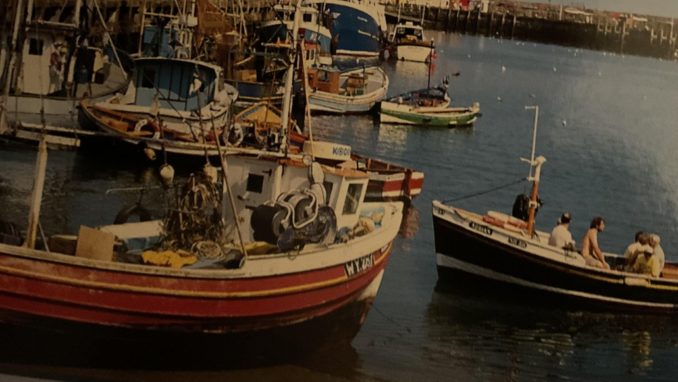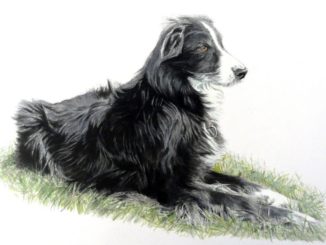
Whitby situated on the East Coast of Yorkshire is known throughout the world, the natural harbour has always been a port of refuge during bad weather. Fishing was the original mainstay with boats known as cobles which are straight descendants in design of the Viking ships the Norsemen came here in. Forty years ago there were many still in use, potting, netting, salmoning although long lining had finally died out through lack of inshore catch, the EU crazies plus the skill and work involved.
As the name says a very long line was used with hooks braided to it at regular intervals, the hooks were baited usually with mussels, a story in itself. In time past the women would gather mussels or flithers (limpets) from the rocks on the shore, latterly sacks of mussels were bought and delivered. These were skeined by hand, sometimes at home, sometimes such as at Scarborough harbour there were bait sheds on the pier. Great gossip shops of course while this was going on but at the same time any woman who didn’t have her house tidy and front step washed and donkey stoned by 8 am was not considered clean and tidy no matter how much other work she had to do..
The longlines were baited and coiled carefully onto what was called a skep, I had one until recently, they were made of some sort of bamboo woven into a slightly oval shape, these were carried onboard and the line was shot usually from the stern with the boat going ahead. Obviously it was imperative they were set carefully on the skep because as soon as a line with baited hooks started flying out any tangle would result in a great mass of hooks, line, bait, going over the side in one great mess and hours of work be wasted.
Going to haul the lines it was only relatively recently that haulers were used, prior to that it was hand balling. I can remember my sons granddad telling me that when they were hauling their line and found someone else had shot across their gear and they brought up the other boats line and it had fish on they would pass their gear under it and any fish on the other line they then unhooked and re hooked on tail first so the other boat knew what had happened. Old style – most of them were true gentlemen.
While I’m thinking of skeining, I knew that women from Scarborough pre WW1 certainly used to walk to Cloughton, even to Robin Hoods Bay carrying wicker baskets to look for flithers as bait, they would then walk back with their haul. One of the well to do women who by then visited Scarborough for the summer season saw how hard they worked, how poor they were, benevolently she put money in trust to pay for them to pay their fares on the railway between Scarborough and Robin Hoods Bay, Cloughton, to make their lives that little bit easier.
One of the photographs of Frank Sutcliffe depicts some of the women with their basses (local for baskets ) long skirts and shawls.
Another part of this was the yearly ritual of the “barking of the lines” I can remember “Buller” and “Pash” – two absolute gentlemen of the harbour – everyone had a nickname – doing this. The gear was immersed in a tannin solution and left to steep, this to stop the lines from rotting. While this was happening, usually around spawning time, the boat would be put on the hard and painted.
All gone so quickly and only ghosts now flickering along the edges of memory , no one to even remember it all soon – sad.
© text & image Heavy Weather 2023



